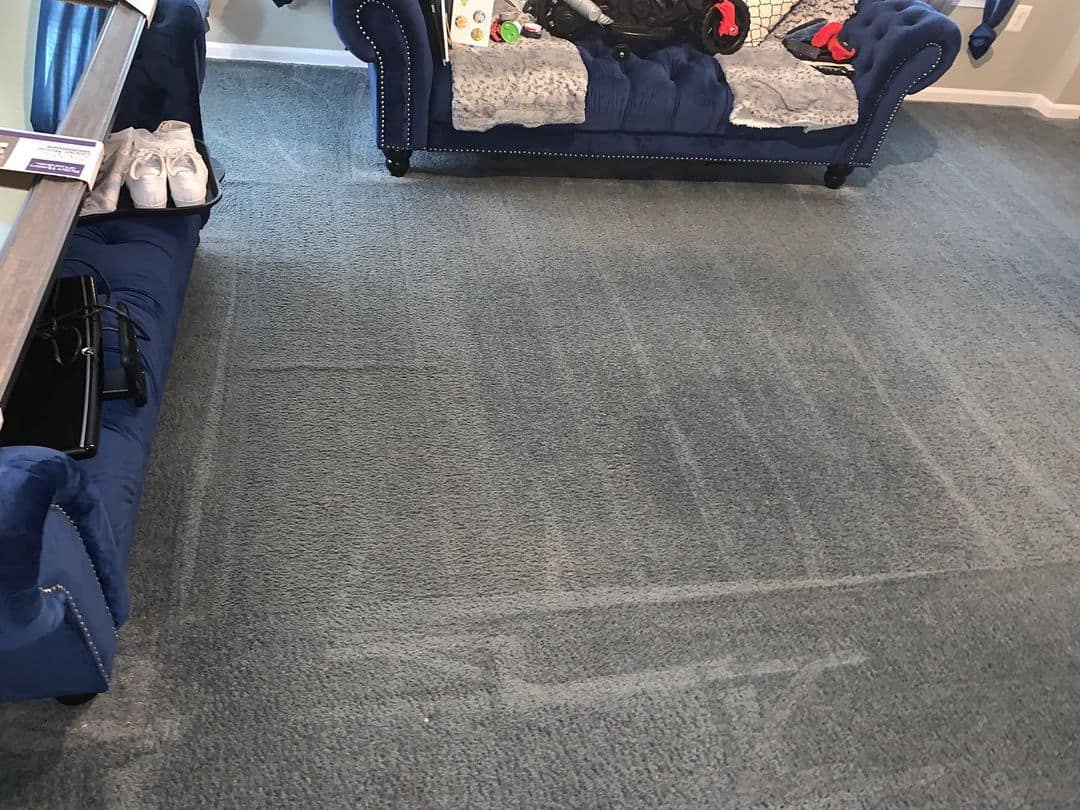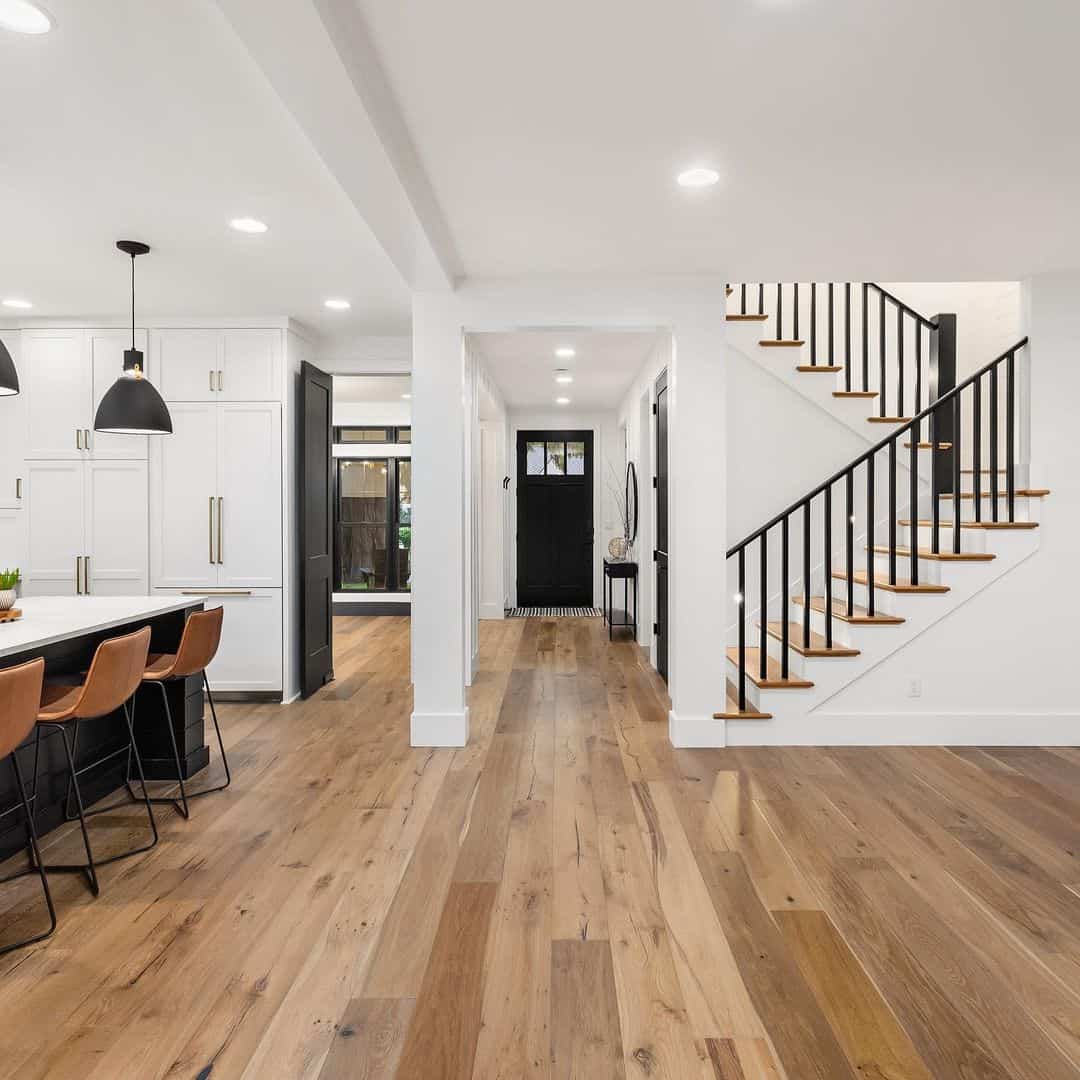Do you want to renovate your flooring? One of the most recommended alterations to your house is changing from carpet to hardwood. And if you’re interested in this rather stylish home makeover, it’s vital that you prepare your budget thoroughly.
So, how much does it cost to replace a carpet with hardwood? In this article, we will give you the technicalities as well as some tips during the purchasing process to help you plan in advance.
Table of Contents
How Much Does It Cost To Replace Carpet With Hardwood?
Why hardwood is better than carpet?
If you’ve been using your carpet for years, perhaps you want a comprehensive analysis of why you should transition to using hardwood. Well, there are several reasons why hardwood has been the top choice among homeowners. Below are the key advantages of choosing hardwood over classic carpet.
1. Exhibits remarkable lifespan
When it comes to durability, it’s no question that hardwood is way better. In fact, this flooring option generally lasts up to 100 years compared to the 10-year life span of carpets. Wood encompasses a high composition of cellulose, making it more durable and long-lasting.
2. Adds up to your home value
Did you know that homes with hardwood are more profitable than those with carpets? Wood, itself, adds to the real estate value of a structure. According to statistics gathered by the National Association of Realtors, more than half of home buyers prefer homes that come with solid hardwood floors.
Therefore, if you want a better return on investment, choosing hardwood is definitely a practical choice. Homes with high-end hardwood flooring enjoy between 70% and 80% ROI, increasing the sales prices of your house by up to 2.5%. So, if you’re in the real estate industry, this is a notable factor to consider.
3. Offers more stylish options
Another reason why wood floors are popular is because of the variety of wood flooring options to choose from. Some of the best hardwood floorings include white oak / red oak, maple, white ash, cherry, and Brazilian walnut.
And before we forget, new hardwood floors exude sophisticated vibes that elevate the home interior. Moreover, the natural shade perfectly complements the unique wood pattern, improving the entire appeal of the house.

4. Comes with easier maintenance
Though both hardwood and carpet are easy to clean, the former is definitely more convenient when it comes to cleaning. Dust and dirt can be removed seamlessly using a rug or vacuum. On top of that, hardwood flooring does not easily get damaged by moisture, not unless you place them in the bathroom.
In contrary to carpets, these are generally made of closely-knitted fibers with backing material. This means that there’s still a tendency for stains to seep through the surface.
5. Focuses on better hygiene
Unlike carpet fibers that easily trap dust, dirt, and pollen, the solid and flat surface of hardwood flooring makes it more hygienic. Hence, it’s an excellent choice for those who have allergies.
So, how much does it cost to replace a carpet with hardwood?
With all the notable features, these make hardwood quite expensive. Thus, it’s only pivotal to know the ins and outs of the hardwood flooring cost. Aside from that, there are other aspects to be considered, so continue reading and learning more about the relevant elements before you begin.
1. Carpet removal
Since you will be replacing the carpets, having an idea of the removal cost is crucial. On average, you need to spend at least $0.11 up to $0.22 per square foot of carpet. So, if you have 330 square foot carpet in your living room, the removal price would range from $37 to $73.
It’s also important to note that most contractors follow a minimum fee for a job. So, if the carpet size is smaller, DIY removal might be the best option. However, getting rid of the carpet on your own may be a tedious process.
You need to do your research in advance, plus being thorough with the process is a must. Despite the physical sacrifices and time allotment, you’d definitely save money compared to hiring a professional to do the job. So, if you’re tight on budget, might as well consider this option.

2. Hardwood material
For the next section, we will focus on the materials. The average cost of a hardwood floor settles between $3 to $10 per square foot. So, if you are planning to install hardwood in a 200-square-foot room, make sure to budget at least $600 to $2000.
This price range, however, varies accordingly. Depending on the type of flooring used, the expense would significantly increase. Solid hardwood is the priciest compared to engineered wood, true parquet, and parquet-style tiles. Aside from the type of floor, you should also consider the tree species.
We’ve mentioned earlier some of the best hardwood floorings. Accordingly, there are more types of hardwood flooring such as bamboo, cherry, cypress, hickory, mahogany, and pine. Teak is also a high-quality hardwood known to be resistant to water, rot, corrosion, and pest.
If you feel these prices are still a bit heavy for your wallet, well there are alternatives. Engineered wood and softwoods, for instance, are a cheaper yet still remarkable choice.
Meanwhile, there are high-quality boards and low-grade ones. And of course, the former costs more than the latter. Additionally, the manner in which the boards are cut is another determining factor of the total hardwood cost.
3. Material thickness
If you have chosen your preferred material, it’s time to move to the next step, which is picking the thickness of the wood. In most cases, hardwood floorboards are 0.75 inches thick, though there are some that are 0.3125 inches thick. The thicker the floorboard, the pricier it could be.
Although buying thinner hardwood can be appealing because of the price, there is a certain disadvantage that you need to comprehend beforehand. Thin floorboards may not be suitable for refinishing and sanding, which are relevant processes, especially for wood materials.
4. Labor
Considering you have ticked off the first three sections, the next step would be to prepare for the installation costs. At present, installers bill around $3 to $8 per square foot. Wood with strong properties and intricate patterns is more expensive to install than softwoods and plain ones.

5. Floor joist repair
Apart from the general labor costs for the hardwood flooring installation, there’s also something that might increase your total expenses. And that is if there are issues on the floor joist or the subfloor. It can be due to old age or perhaps other elements like irregular maintenance and pest accumulation.
Accordingly, damages on the horizontal structural member of the flooring are quite crucial, hence repair is a priority. And when fixing joists, may cost around 2,000 to $5,000.
6. Finishing
According to their finish, new hardwood floors are categorized into two―prefinished boards and unfinished ones. The prefinished boards are more expensive since these already have a coating. Although the unfinished boards are cheaper, you may need to pay extra for the labor during the final installation.
Picking the right type of finish is crucial for the longevity of the flooring. There are several finishing coating options in the market such as water-based or oil-based polyurethane, moisture-cure urethane, acid-cured, wax, and shellac. Aluminum oxide is also a credible choice when it comes to durability.
What are some things to consider before the installation?
Before you ultimately decide on hardwood flooring, there are some key points that you need to factor in to avoid problems in the long run. Make sure you go through each of the important reminders below to help you with the decision-making.
- Hardwood floorings, despite having durable characteristics, are not water-resistant. Therefore, it’s definitely a no-no to install these in the bathroom or areas where there is excessive water presence or accumulation.
- Just like any other new flooring, you need to properly maintain hardwood. Make sure to remove dirt as soon as possible to avoid stains. Sweeping is also recommended to be done daily. However, wet mopping is not advisable as this can cause the floor to swell.
- And since there are different wood variations, you need to be careful with the usage of chemicals. You may use a special wood cleaner to maintain the features of the wooden board. If you are unsure, don’t hesitate to contact the wood manufacturer for guidance.
- Hardwood comes with a refinishing potential, which means you may modify the style and color after many years. Thus, you won’t spend a full replacement cost just to have a new hardwood look.
- The total replacement and installation cost significantly depends on certain areas, from the size of the carpet to the type of wood. Therefore, your budget depends on your needs and finances.
- If you don’t want to break the bank but still prefer high-quality flooring, there are several alternatives in the market. For one, engineered wood is an inexpensive choice with incredible characteristics that are somehow similar to hardwood.
Conclusion
Hardwood flooring is definitely one of the best investments you can give to your home. It’s a timeless construction piece that adds sophistication―and value over time. So, before you begin with the home improvement project, learn the main factors that affect the total installation price.